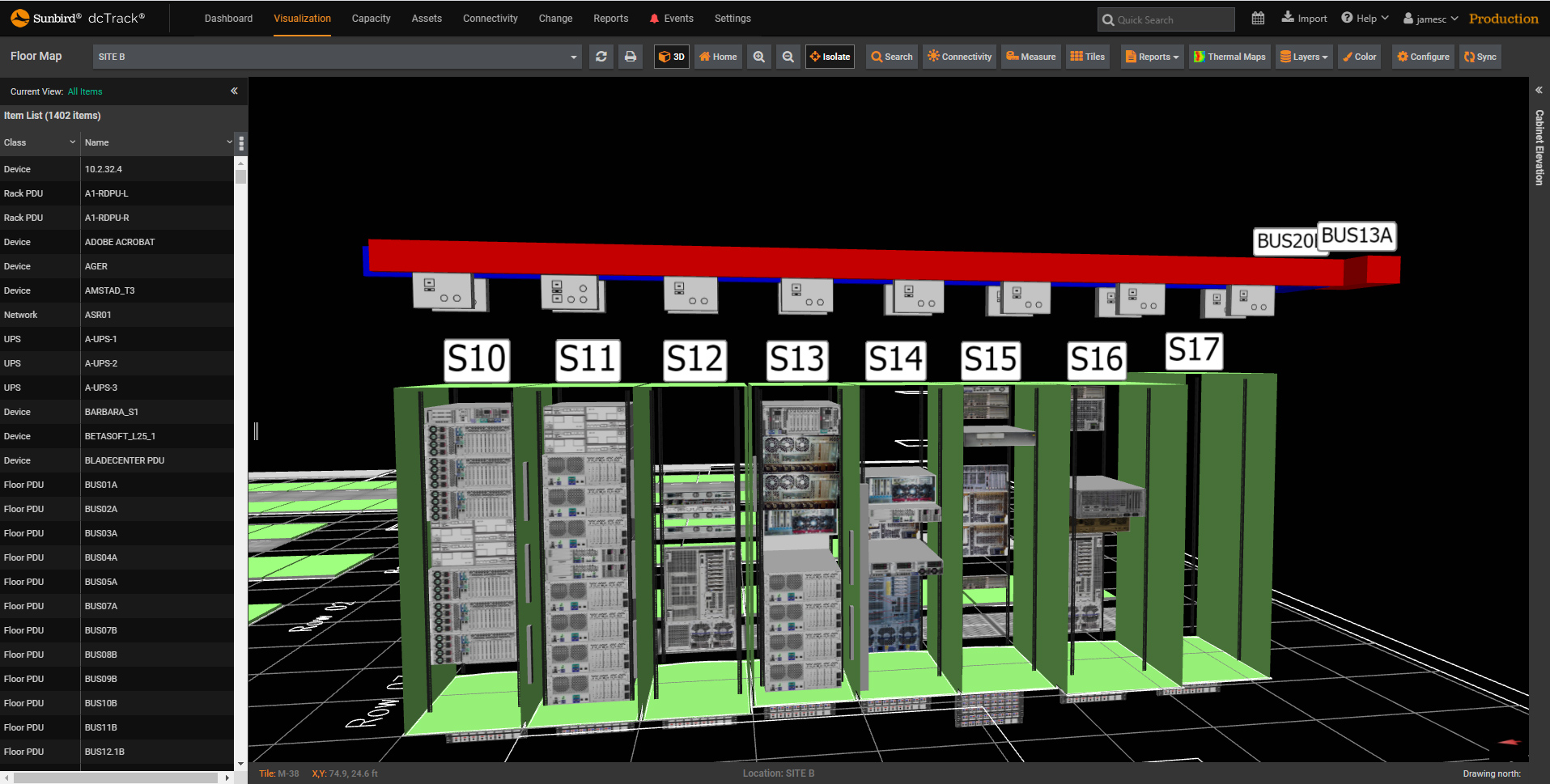8 Simple Ways to Enhance Your Data Center Busway Deployment
Modern data centers and labs are growing in density and complexity as IT devices require more and more power to racks. As such, many data center and lab managers deploy overhead busways for their reduced installation costs and better flexibility, scalability, reliability, and aesthetics.
However, without a software solution to monitor and manage your busways, you likely aren’t getting the full value out of them.
Leading data center and lab managers are increasingly leveraging DCIM software to centrally manage all their busways and tap boxes.
Here are eight ways that DCIM software helps you get the most out of your existing data center busway deployment.
- Remotely visualize your busways on your data center floor map in 3D. You no longer have to make physical trips to the data center to see where your busways, tap boxes, meters, racks, and IT equipment are. New functionality in DCIM software enables you to visualize your busway infrastructure from anywhere with overlaid details to provide a better-than-being-there experience. You can easily see the make, model, status, and connections of your busway and can also see high-fidelity images of your tap boxes that allow you to label your receptacles and understand which receptacles are currently connected or not.
- Accurately track and manage busway assets. Leverage measured readings from your busway meters to get the most utilization out of your power capacity. In one screen, you can track the budget and actual load for each tap box, the voltage rating and consumed power capacity for each busway main breaker, and the current for each of the three phases with the percentage unbalanced, the highest phase, and the lowest phase.
- Track the full details of each tap box. With the click of a button, see the full item details for any of your tap boxes, including unlimited custom fields. At a glance, know the number of poles, phase of each pole, breaker rating, circuit status, and connections of a tap box. This simplifies capacity management as live readings are provided to give you the percent power utilization of your busway capacity.
- Make more informed power and capacity planning decisions. Modern DCIM software offers many ways that you can increase the efficiency of your power capacity utilization. Easily find stranded power capacity, project future capacity needs, visualize rack- and row-level power usage, and trend usage over time. You can also monitor the budget and actual power utilization for all your busways in one easy-to-understand dashboard chart to know if you are overloading a busway which may cause downtime or underutilizing a busway.
- Simulate rack failover. Most power issues can be traced back to misunderstanding redundancy. Simulate a power chain failover to accurately predict and identify at-risk cabinets without impacting equipment in use. Identify available capacity to ensure redundancy in the case of an outage.
- Be the first to know of potential issues. Without properly monitoring your busways, you open yourself up to a higher threat of downtime, which can be very expensive. Set user-configurable thresholds on rack power, sensors, circuit breakers, and three-phase balance to be automatically alerted via email of threshold violations so you can react and remediate the issue before you experience downtime or customers are impacted.
- Simplify three-phase load balancing. Don’t let unbalanced power cause premature circuit trips, secondary voltage imbalances, additional transformer losses, and high neutral currents. With DCIM software, you can monitor power consumption on all three phases in real time and set thresholds to receive alerts on unbalanced conditions. This will allow you to maintain three-phase load balance, maximize uptime, and optimize your power resource utilization.
- Support and measure the impact of energy efficiency initiatives. Automatically generate billback reports to drive more efficient behaviors by your customers. Know the immediate impact of this and other initiatives by reporting on Power Usage Effectiveness (PUE) and other energy metrics in real time.
Bringing It All Together
Busways can be a great alternative to remote power panels (RPPS) and power whips that inhibit flexibility, require difficult circuit additions, require new cable installation, restrict airflow, and make tile removal necessary for any work.
However, your busway deployment can be greatly enhanced by centrally monitoring and managing them with a second-generation DCIM software solution.
Data center busways, when combined with DCIM software, form a complete solution that enables you to improve uptime, increase the efficiency of capacity utilization, and improve the productivity of people.
For more information on busway management, check out our new eBook Top 10 Reasons to Monitor Busway Tap Boxes.
Want to see how Sunbird’s world leading second-generation DCIM solution dramatically simplifies busway management? Get your free test drive today.





























